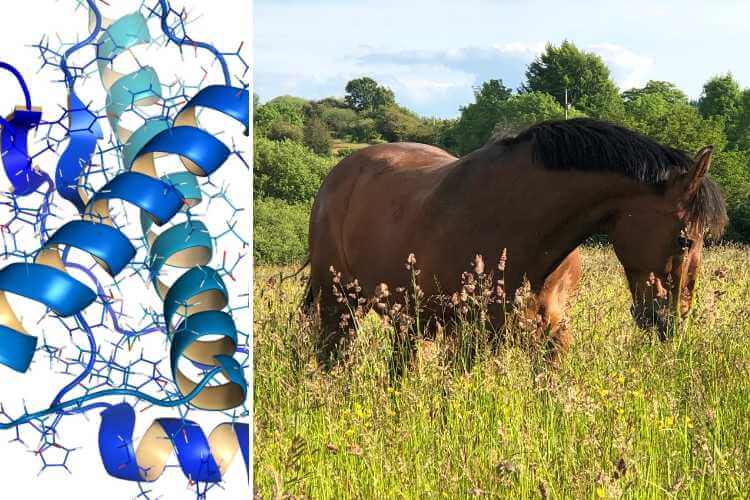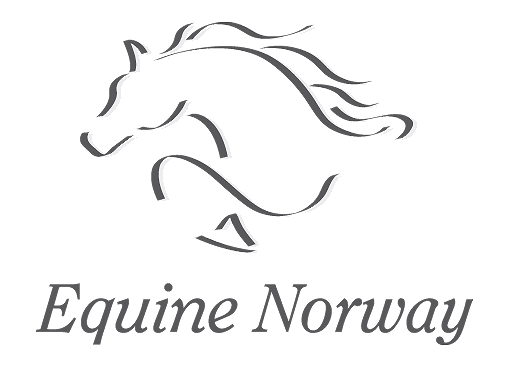Handlekurven er tom
-
0
-
Hest
- Kraftfôr
- Shop etter merke
- Stallapoteket
-
Tilskudd hest
- Hovpleie
- Pleieprodukter
- Urter
- Eksem, kløe og mugg
-
Terapiprodukter
- Sommerprodukter
- Rytter
- Western
- Hund
- Gavekort
- Nyheter
-
Merker
- Tilbud
Se alle produkter
Handlekurven er tomEr du usikker på hvor du skal begynne?
Sjekk ut nyhetene våre
Se alle produkter
Se alle produkter
Kategorier
- Hest
- Kraftfôr
-
Shop etter merke
- AcerbiPharma
- ALEXA LIFE
- All That Western
- Alyose
- Ariat
- Back on Track
- Barrier Animal Healthcare
- Carr & Day & Martin
- Ekholms PROB
- Equi-N-Ice
- Equistro
- Forageplus
- Grooming Deluxe
- Handed By
- HorseFlex
- Kentucky Horsewear
- Kevin Bacons
- Kruuse
- Likit
- NAF
- Nellumbo
- Nordic Horse
- ON-H
- Photizo
- Photonic Lights
- Probihorse
- Red Horse Products
- Shapley’s
- Snuggy Hoods
- StripHair
- Tough 1
- TRM
- Stallapoteket
- Tilskudd hest
- Hovpleie
- Pleieprodukter
- Urter
- Eksem, kløe og mugg
- Terapiprodukter
- Sommerprodukter
- Rytter
- Western
- Hund
- Gavekort
- Nyheter
Forageplus Essential Amino Acids 1 kg
Ta med måleskje her.
Essensielle aminosyrer for hester er avgjørende for å opprettholde muskulaturen og god helse der en hest er i trening eller får grovfor med lite protein.
Aminosyrer er komplekse kjemikalier som er byggesteinene i protein, som igjen er nødvendige for å skape nytt vev og reparere eksisterende celler. En essensiell aminosyre kan ikke syntetiseres eller skapes av kroppen, og må komme fra dietten. Mens fri tilgang på grovfor er nok til å forsyne de fleste hester med alle aminosyrene de trenger, er det noen ganger lite protein i grovfor og visse essensielle aminosyrer. Det er et komplisert forhold mellom tilgjengelige nitrogen- og svovelnivåer, noe som betyr at noen aminosyrer noen ganger, selv om råprotein kan se tilstrekkelig ut, ikke er riktig sammensatt og derfor ikke er tilgjengelige for hesten.
Essensielle aminosyrer til hester (EAA) er nødvendig for å bygge nytt vev og hjelpe til med reparasjon av celler som skjer når musklene restituerer seg. Det å få riktig mengde i en diett hjelper hesten til å forbedre kroppsbygningen og ogsågi en raskere restituering. De viktigste essensielle aminosyrene som kreves av kroppen er L Leucin, L Isoleucin, L Valin, L Lysin, L Fenylalanin, L Treonin, L Histidin, L Metionin, L Tryptofan.
Hester krever alle de forskjellige essensielle aminosyrene som en del av dietten av flere årsaker, inkludert cellulær reparasjon, men de er også nødvendige for å få mest mulig ut av proteinrik mat. Hvis en hest ikke får nok essensielle aminosyrer i kostholdet, vil ikke kroppen trekke ut maksimale næringsstoffer fra proteinkilder, og kaloriene i proteinet vil bli lagret som fett. Kravet om et balansert antall aminosyrer i dietten er kjent som ‘limiting protein utilisation’.
Når vil du bruke Forageplus Essential Amino Acids til hester?
- Når du ikke vil supplere ekstra protein ved hjelp av Whey protein.
- Enhver hest som er involvert i tung trening kan kreve dette tilskuddet for å sikre at nok av de forskjellige essensielle aminosyrene forbrukes for å dekke kroppens behov. Du kan imidlertid bruke målrettet BCAA-tilskudd etter trening og Whey Protein Isolate.
- Hester som er på begrenset fôr for å kontrollere vekten, kan trenge ekstra tilskudd med målrettede aminosyrer.
- Hester som fortsatt har dårlige stråler og / eller dårlig hovvegg og forbindelse, selv om mineraler er tilstrekkelig balanserte.
- Hester som har problemer med å utvikle topplinjen. Du kan imidlertid bruke Whey Protein med god effekt i denne situasjonen.
- Når fôr viser et dårlig nitrogen / svovelforhold, for å fastslå dette, må du ha utført både en ernæringsanalyse for å bestemme nivået av råprotein og en mineralanalyse for å bestemme nivåene av svovel i fôret ditt. Når fôr har blitt gjødslet med nitrogengjødsel, er det vanlig å finne et feil forhold mellom nitrogen og svovel som påvirker tilgjengeligheten av aminosyrer.
Essential Amino Acid Powder Blend
Amino Acid Profile Per 30g:
L Leucine 10000mg
L Isoleucine 1780mg
L Valine 4400mg
L Lysine 4400mg
L Phenylalanine 3600mg
L Threonine 3000mg
L Histidine 14200mg
L Methionine 1000mg
L Tryptophan 400mg
Dosering:
Feeding rate for an average 500 kg Horse : 25-100 grams per day.
1 x 50ml scoop = approx 25 grams
Ved å gi en 500kg hest med low rate (25 grams) varer dette produktet i 40 days.
Ved å gi en 500kg hest med higher rate (100 grams) varer dette produktet i 10 days.
Dette er kun en guide.
Forstå hvorfor riktig protein- og aminosyrenivå er avgjørende for hestens helse:
Understanding Horse Protein
Understand horse protein from Forageplus. Good levels of protein in the horse diet will maintain and support health and well being but how much protein does a horse need? Will a horse get enough protein in the daily diet and why is protein for horses important?
The health of your horse is affected by many things. The healthy horse is created when the environment where a horse lives and eats provides adequate social interaction, correct movement and correct training – if ridden. Perhaps most importantly, as the structural building block of all that your horse is, the food and nutrition your horse is exposed to on a daily basis is crucial.
To learn more about protein for horses, click here to download our free EBook on protein.

What does protein in a horse diet do?
Without good quality nutrients, each day, your horse will not maintain the structural strength in cells, nerves, hooves, vital organs, tendons, ligaments, muscles and bones to have a long, sound and active life. Without nutrients at the right levels and in the right ratios with each other your horse will not be able to function efficiently on a whole system level.
The elements of nutrition which are important for life are calories (referred to as DE when discussing horses) minerals, vitamins and protein. Out of all these horse protein at the right level and quality is the most important, but least understood and usually least measured in the total diet of the horse. Yet protein is vital, essential, crucial for the healthy horse and just assuming there is sufficient on a daily basis not enough.
Here are five main reasons for making sure that you understand the role horse protein has for health.
Five reasons horse protein is vital
- Protein is quite literally life! It is fundamental to every process in the body. Protein provides the structure that makes connective tissue of bones, ligaments, tendons and muscle. Protein also makes a lot of other things in the body; defense mechanisms for strong immune systems, sensors, healthy hair, healthy skin and strong sturdy well functioning hooves.
- Without a certain level of protein your horse cannot maintain and support health. A deficiency each day or each week means that a cumulative shortage of protein will result in structural weakness where the body struggles to maintain health due to a lack of building blocks to create strong sturdy structures. Obviously as time marches on more and more structural integrity is lost and failures in body structures are seen. If you see weakness in hooves, tendons, skin, immune system, digestive system, bones, ligaments and tendons then you may well be looking at protein deficiency.
- Protein, in forage levels here in the UK and Europe, is usually too low to provide what is needed for adult horses on a daily basis (figures from NRC 2007). From our experience most horses have access to poor quality, over grazed pasture and hay or haylage that might look good but when tested, scientifically, reveals poor protein levels and quality commonly at 5 – 6% per kg of forage fed.
- Your horse’s health starts with forage. Since grass, hay or haylage is the greatest proportion of your horse’s diet this is the most sensible and cost effective place to start. An average 500 kg horse will consume around 10kg of hay per day if allowed ad-lib access, on green and growing pasture this will convert to around 50 kg of grass, assuming a dry matter content of 20%. So a year of hay consumption will equate to a staggering 3.6 tonnes a year, grass consumption will equate to 18.25 tonnes! Ignoring the forage component of a horse’s diet and concentrating solely on the bucket feed each day is not sensible or cheap! Since the forage proportion of the diet is going to be the primary source of protein it is critically important to know whether your hay or pasture is a reserve of poor or high quality protein. If you can this should be the best and greatest source of protein, ideally it should supply all the protein needs for an adult horse in maintenance to light work.
- Young horses, breeding mares, horses in medium to heavy work and horses which are good doers or prone to laminitis are particularly at risk from protein deficiency. Young horses and breeding mares need large amounts of protein in the diet to support growth and development of the foetus or production of milk. Where protein is under supplied then growth and development of the foetus or foal will be affected. Horses in medium to heavy work needed enhanced levels of protein which may not be supplied even when fed a substantial bucket feed. This is because on average Forageplus scientific analysis of forage shows protein levels to be commonly around 5-6% where horses in substantial exercise need 8% plus. Horses and ponies prone to laminitis are often fed restricted hay and grass and fed either no bucket feed or a token bucket feed just to carry vitamins and minerals. Where protein is low in forage then this can have a significant impact on the total amount of protein consumed and thus the ability to support recovery and healing.
If you have any questions about the protein levels in your horse’s diet just contact Forageplus with your questions. We are always happy to share our knowledge and experience. As horse owners, riders and trainers we know that the most important thing is to build health and resilience in the whole horse so that we can share a life time of fun with our equine partners.








